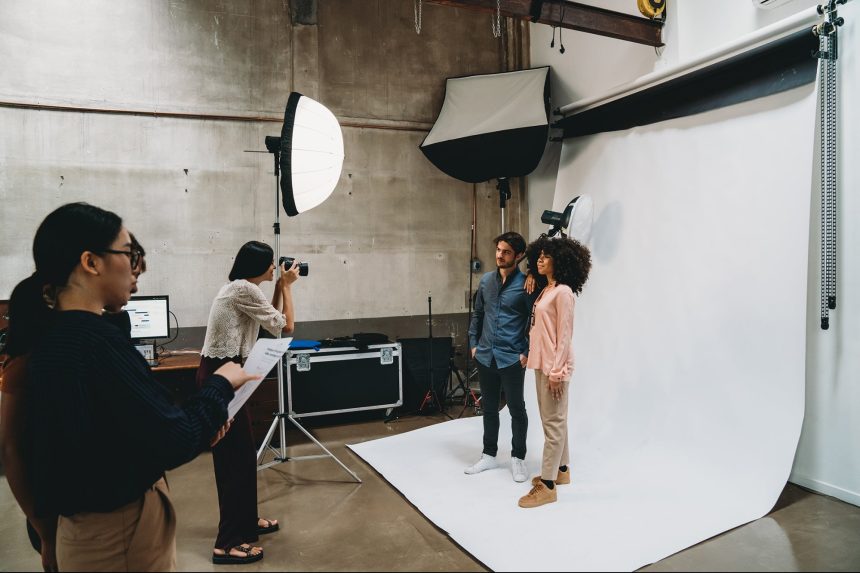Models are essential — having worked in the fashion industry, I know it’s a cutthroat sector of work. Most importantly, I understand the importance of humanizing a brand using real people. Authenticity was always critical to the success of both models and brands, and it’s become even more so as artificial intelligence seeks to replace living people with synthetic replicas.
When generative AI image apps like MidJourney exploded onto the scene, artists and photographers immediately protested over their work being stolen. AI-generated models take things even further by offering a diverse range of synthetic people to choose from.
Artists and writers largely ignored humans whose likenesses were used to train these models while protesting AI. That was until Levi’s announced its partnership with Lalaland to leverage diverse AI models in its advertising. The move received backlash because creating a diverse range of AI-generated people in ads is not the same thing as a company hiring a diverse range of people and giving them careers with upward mobility, job security, healthcare, and retirement benefits.
Related: What Every Entrepreneur Must Know About Artificial Intelligence
It reminded me of an aloe vera factory I visited on a recent trip to Aruba. The local growers used to export to the US because a specific compound in the plant works as a natural laxative. However, as American scientists learned to synthesize the compound for cheaper, the farmers were squeezed out. In a dystopian world, synthetic models could very quickly displace human models.
It stokes fear for models, influencers and creators alike, as the flood of AI-generated content will make it harder to stand out and build an engaged community online. Can the modeling industry survive?
Evolution of the modeling industry
Although fashion is second nature to my co-founder, myself, and our clients, the average person may not realize how many entrepreneurial skills it takes to succeed as a professional model. On average, most models make around $25 per hour modeling. Like any creator, there’s an exponential success curve, and only the top 10 percentile makes a genuine living as a model.
In the 90s, supermodels like Kate Moss, Cindy Crawford and Naomi Campbell dominated magazine covers, TV and billboards, focusing on the high end of this scale. To land major fashion campaigns now, models must have a minimum follower count and looks become secondary. A six-figure following on a popular social platform is necessary to stand out and land gigs.
Related: 3 Tricks to Become an Instagram Influencer
Today’s marketplace is crowded, and brands like Coca Cola and Adobe are already on the bandwagon of using and promoting the usage of AI. However, using AI comes with risks, including potential legal liability, lack of IP protection, and consumer backlash. While it can save money, it risks diminishing your brand as it defeats the purpose of using models in the first place–humanizing your brand.
Supporting and hiring human models can help you build a strong relationship with your customers. Here are three key reasons human models are better than AI.
1. People are unique
AI is trained on old data. The style of models is beginning to shift away from unobtainable figures only seen on TV and billboards to embracing the wide range of natural body types that real human beings have. Although plus-sized models were the least represented body type during Paris, New York, Milan and London fashion weeks, Vogue celebrated women of all sizes in its show.
We are all unique, and our body, for better or worse, plays a role in how we interact with the world and society in our personal and professional lives. A model who embraces their individual and authentic look and personality can overcome the uncanny valley to humanize your brand.
2. People need work
Models don’t work alone — it requires wardrobe, stylists, set design, location scouting, photography and more just for the perfect shoot. Models must also spend 20% of their earnings to compensate their modeling agency, dedicated agents and creative directors. Let’s not forget unpaid time, like getting casting calls for countless gigs only to be ghosted.
The take-home pay after paying their team is typically only 80%, which is important to remember when hiring. If you build a reputation for taking care of your models, it adds credibility to your brand. Supporting human workers as creatives around the country are striking could earn you some very loyal customers and solidify you as ethical, while AI remains in a gray area.
Related: The Secret to Being a Successful Fashion Entrepreneur
3. People are authentic
A human model can get people engaged with your brand in ways that AI simply can’t. They can show up to live events and have real conversations with people. They can appeal to fans, stand for a noble cause, build true relationships and have a strong community on social media. It’s not just the content that makes an influencer or model — it’s their interactions and experiences in life.
Natural beauty will never go out of style, especially as the industry evolves to incorporate more unique looks. Our authenticity is what will ultimately separate us from the pack. We feel real connections with the people in advertisements and commercials selling us a lifestyle more than any particular product. That human touch includes our flaws as much as our imperfections.
Don’t be so quick to replace a real person with a synthetic AI replica. While it may be easier and cheaper to create the content, it creates a disconnect for the audience. The point of hiring models was always to humanize a brand — and AI can’t do that…yet.
Read the full article here










